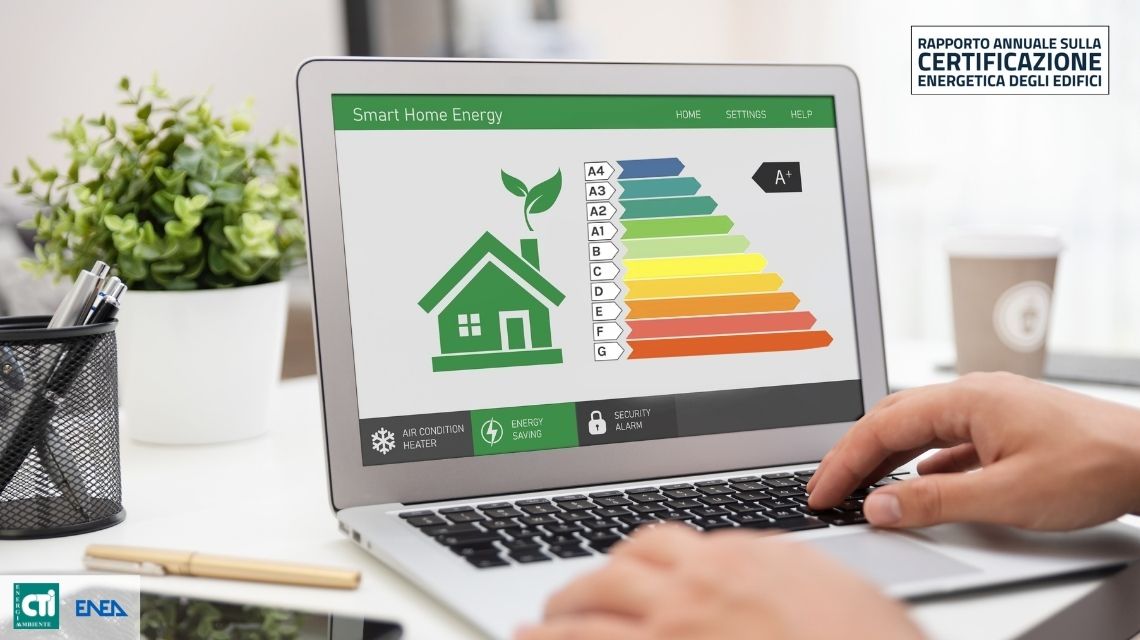Italian National Agency for New Technologies, Energy and Sustainable Economic Development

Energy: Performance of the building stock in Italy has improved significantly
The percentage of buildings in the least efficient energy classes (F and G) fell below 50% in 2023 according to 5th Report on the Energy Certification by ENEA and CTI
The energy performance of the national building stock certified in 2023 has improved significantly, with a percentage of buildings in the least efficient energy classes (F and G) falling below 50 percent for the first time since surveys began.
The Fifth Annual Report on the Energy Certification of Buildings drawn up by ENEA and the Italian Thermotechnical Committee for Energy and the Environment (CTI) on the basis of Energy Performance Certificates (APEs) registered in SIAPE[1] showed that the energy performance of the national building stock certified in 2023 has improved significantly, with a percentage of buildings in the least efficient energy classes (F and G) falling below 50 percent for the first time since surveys began.
The report was presented in Rome at an event also attended by ENEA and CTI presidents Gilberto Dialuce and Cesare Boffa.
After appropriate checks conducted by ENEA, 1.1 million APEs were registered on the SIAPE in 2023, with the largest share issued in Lombardy (21.7 percent), followed by Piedmont (9.2 percent), Veneto (8.7 percent), Emilia-Romagna (8.5 percent) and Lazio (8.3 percent).
The Report shows an increase of about 6% in the most efficient energy classes (A4-B) in the residential sector as compared to 2022, which confirms an improvement in energy performance, A further positive trend is the growth in the percentage of APEs issued as a result of energy upgrades and major renovations, which account for 7.9 percent and 6.4 percent respectively (+2.3 percent and +2.4 percent as compared to 2022), also confirmed by certificates relating to property transfers and leases, which are down compared to 2022 (-5.3%), although they still account for 54.2% of the sample analyzed.
The 2024 edition of the Report also focused on the new tools and methods of analysis developed to improve the quality of APEs, particularly the control techniques used by certifiers, both during and after the APE preparation phase. The Report also presents focuses on the improvement of the regional Single Energy Cadastries (CEUs), depending on a possible development of the National Single Cadastre, the National Portal for the Energy Performance of Buildings (PnPE2) and other IT applications prepared by ENEA.
The Report also illustrates, reflecting general consensus, the outcomes of a survey conducted on over 10,000 certifiers on significant aspects of the EPA drafting process, from professionals qualification to data retrieval, to relations with other actors in the process to perceived usefulness of this important tool.
“The ENEA - CTI Report highlights how energy certification is not just a technical tool to assess the performance of buildings and more generally of the Italian building stock, but also a tool to improve their efficiency, encouraging the adoption of innovative technological solutions to reduce consumption,” said ENEA President Gilberto Dialuce. “In a context of major challenges like energy transition and decarbonization, the APE offers the opportunity to enhance energy culture, to encourage virtuous behavior and investments aimed at improving efficiency and sustainability.”
“The new edition of the Report calls attention on how the energy certification mechanism works and produces significant results, as it constitutes an important working tool that through periodic monitoring of the situation allows legislators and operators, as well as ENEA and CTI which developed it, to assess the evolution and outcomes of national strategies to support the energy transition and decarbonization and to dentify areas for improvement. This is all confirmed by the positive results shown in the 2024 Report,” explained CTI President Cesare Boffa.
